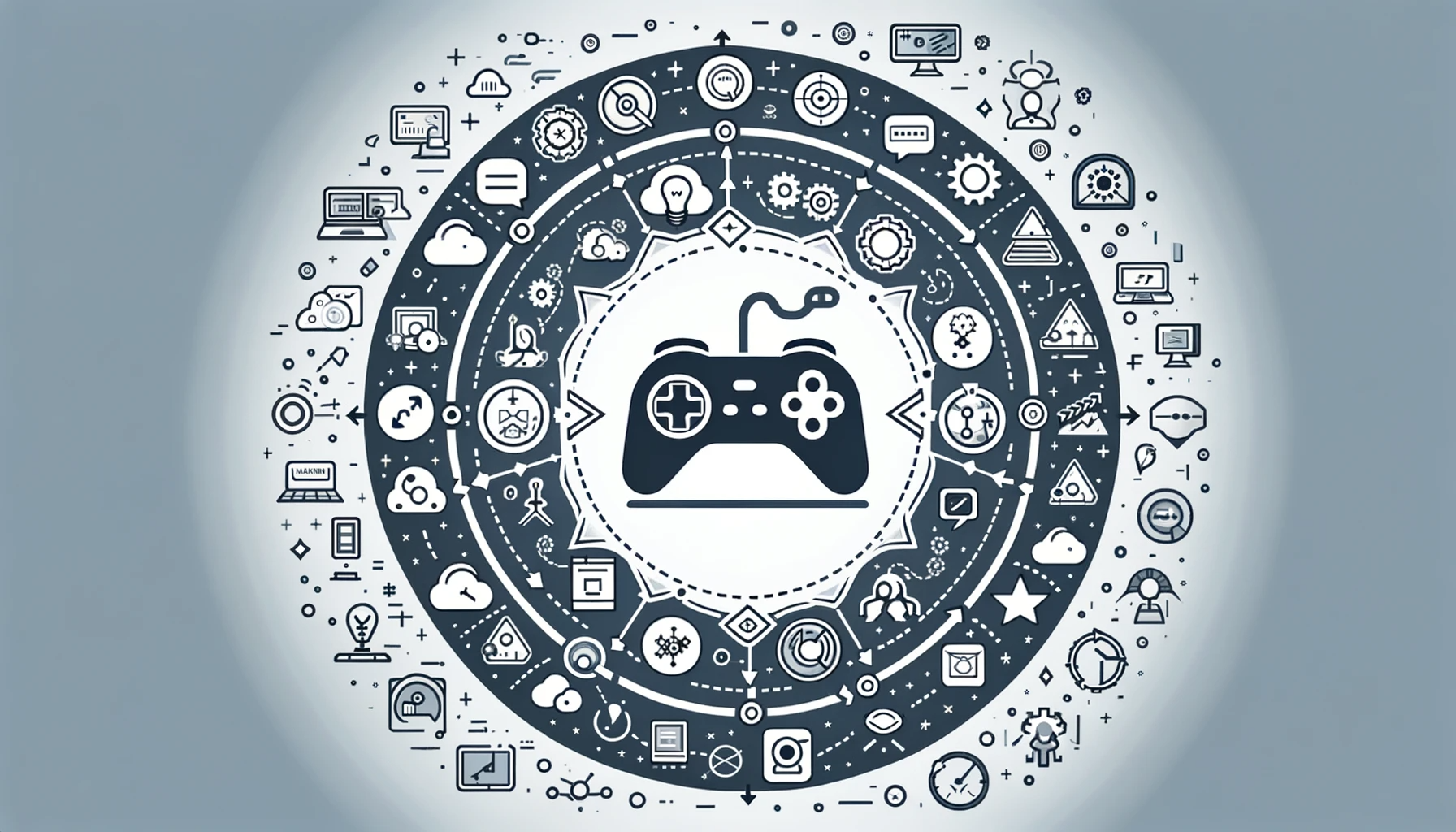Embarking on the journey of creating a video game is an exhilarating adventure that intertwines creativity, technical skill, and strategic planning. The game development cycle is the backbone of this process, ensuring that from the initial spark of an idea to the final release, every step is meticulously crafted and executed. This cycle is not just a pathway but an evolving story of innovation, problem-solving, and artistic expression. As we explore the game development cycle, you’ll gain more insights into the world of creating games.
Planning: The Foundation of Game Development
Before a single line of code is written or a character designed, the planning stage lays the groundwork for a successful game. Here, visions are sculpted into tangible concepts, and objectives are set. It’s a stage characterized by brainstorming sessions, market research, and the crafting of a unique game idea that will make the game stand out in a crowded marketplace. This phase is critical as it defines the scope, resources, timeline, and goals that will guide the entire development process.
Pre-Production: Blueprinting Your Game
The pre-production stage is where the game starts to take shape. Designers and developers come together to create a game design document (GDD), a comprehensive blueprint that outlines every aspect of the game. From gameplay mechanics to storylines, from character biographies to the technological framework, the GDD is the reference bible for the development team. It ensures that everyone shares the same vision and understands their role in bringing the game to life.
Production: Bringing Your Game to Life
During production, the theoretical becomes real as programmers, artists, and designers collaborate to build the game’s components. This stage is the longest and often the most resource-intensive, involving coding, creating assets, and integrating various elements into a cohesive experience. Teams work in sprints to achieve milestones, constantly testing and iterating to ensure quality and consistency.
Alpha and Beta Stages: Refining the Game
As the game nears completion, it enters the alpha and beta stages, where the primary focus shifts to testing and refinement. The alpha stage is an internal test to hunt for bugs and assess gameplay, while the beta stage often opens testing to a selected group of external players. This feedback is invaluable, allowing developers to fine-tune the game, adjust difficulty levels, and polish the user experience.
Launch: Releasing Your Game to the Public
The launch is the culmination of the development cycle, but it’s far from the end of the journey. As the game hits the market, the focus turns to marketing, maintaining servers, and customer support. A successful launch is celebrated, yet it’s also monitored closely to address any immediate issues that players encounter.
FAQ on Game Development Cycle
The duration of the game development cycle varies significantly depending on the complexity of the game, team size, and resources. It can range from a few months for simple mobile games to several years for large-scale AAA titles.
While certain stages can be streamlined with efficient planning, a rushed development cycle can lead to a subpar game. Quality takes time, and cutting corners can impact the game’s success.
Each stage is critical in its own right, but many developers agree that planning and pre-production are particularly crucial. These stages set the direction and scope, making them the foundation upon which the game is built.
Player feedback is incredibly important as it provides real-world insights into the game’s playability, bugs, and potential improvements. It’s a valuable tool for ensuring the game’s quality and longevity.
Post-launch, developers continue to support the game with patches, updates, and new content. They also engage with the community to gather feedback and ensure the game remains relevant and enjoyable.
Conclusion: The Evolving Nature of Game Development
The game development cycle is a dynamic and iterative process that doesn’t truly end with the game’s release. Post-launch, the game will evolve with updates, expansions, and community input. In this ever-changing landscape, developers must be agile, receptive to feedback, and ready to adapt to new technologies and player expectations. The game development cycle is the story of a game’s life, ever-evolving, from concept to a living entity in the gaming ecosystem.


